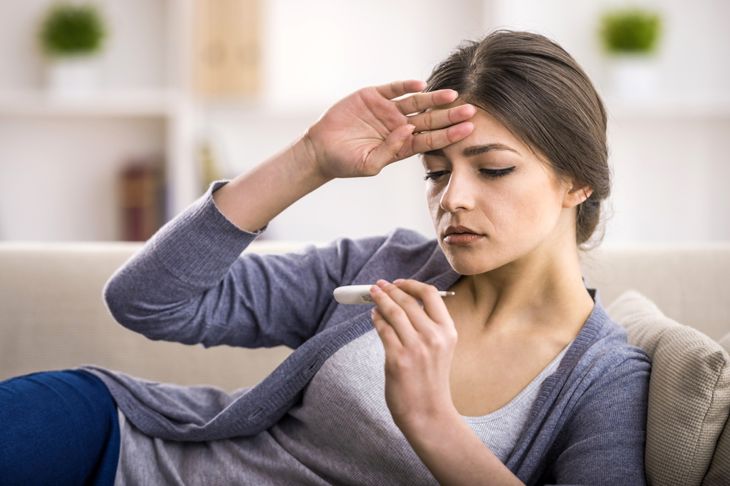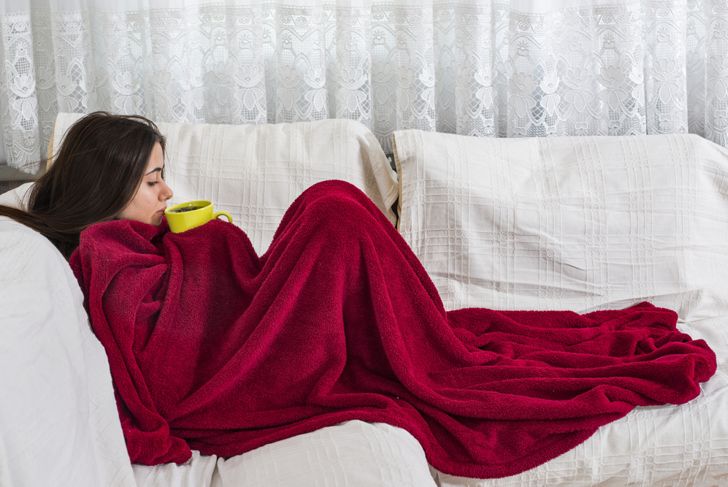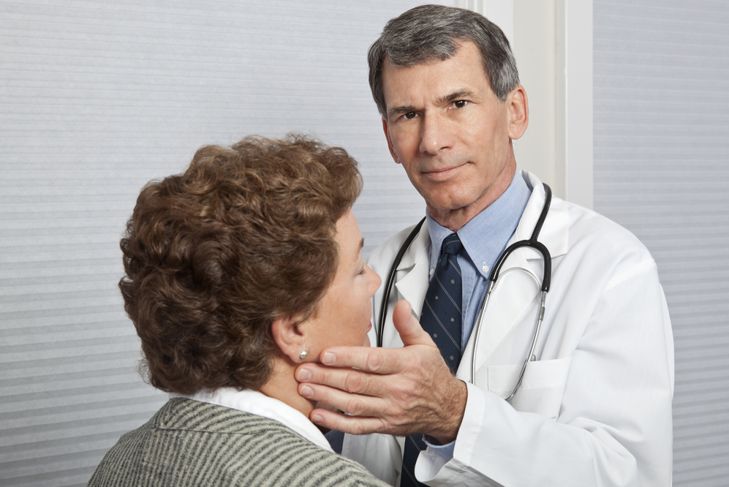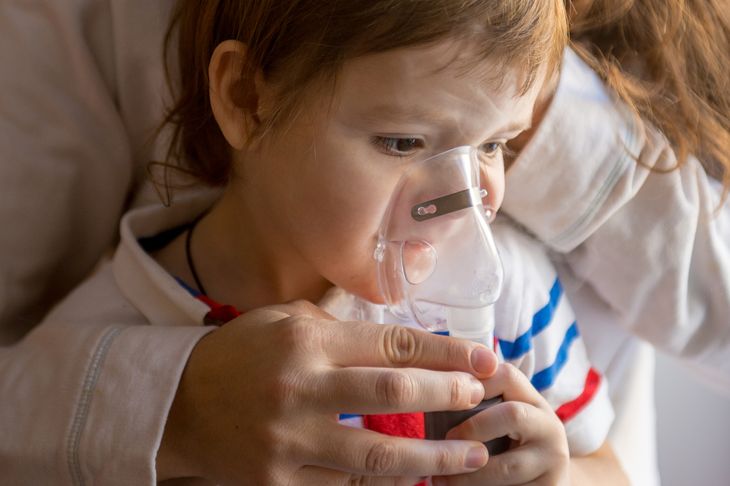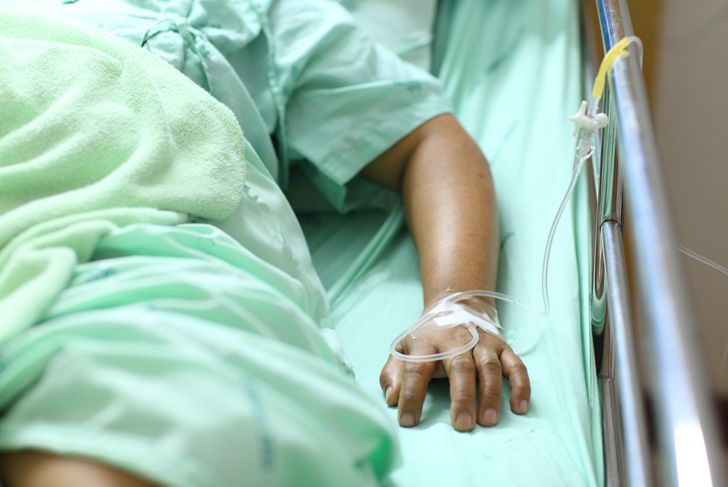Although diphtheria is not as common as it once was, several thousand people each year still suffer from this deadly infection. Its decline in popularity is largely attributed to the diphtheria-tetanus-pertussis shot, a vaccine more commonly referred to as DTaP, which doctors recommend for all children. Although diphtheria is treatable, it is a very serious infection that can result in hospitalization and even death if proper medical care is not received. For parents of children who did not or could not receive the DTaP shot, it is important to recognize some of the most common symptoms of diphtheria.
Sore Throat
One of the first signs of a diphtheria infection is a sore throat. It may be confused with strep throat or a virus, but a physician will be able to diagnose diphtheria based on other symptoms. This infection is more serious when a child contracts it, with the mortality rate nearly double, so it is important to take any sign of a sore throat very seriously. To soothe a sore throat, try drinking warm herbal tea with honey. The honey also has antibacterial properties, which can help with the infection, but seeing a doctor for proper treatment is your best course of action.
Fever
Although fever is one of the early signs of diphtheria, it is not often severe enough to warrant a trip to the doctor on its own. Typically, the fever will stay around 101 degrees, which is considered mild. If you experience a sore throat and fever or notice these symptoms in your child, it is always a good idea to consult a doctor to make sure it is just a virus and not a more serious condition, like diphtheria. As the infection progresses, the fever may spike as high as 105 degrees, but this is rare and only occurs in severe cases.
Mucus
The telltale sign of diphtheria is a thick, gray mucus on the back of the throat and tonsils. You can detect it by using a mirror and bright light to check the throat of the patient. This mucus may also be white and is formed by a toxin. It forms a coating that makes it difficult to swallow or breath. If you notice this, you should go to the doctor right away, because diphtheria is a very serious infection. It will require medication to combat the toxins and reduce mucus production. If left untreated, it will continue to worsen until the patient cannot breathe at all.
Chills
Patients who have diphtheria may develop chills shortly after the onset of the infection. This is in part due to the fever, which makes it difficult to regulate body temperature. Chills are a sign of a progressively worsening infection, so it is important to get appropriate medical care right away. Doctors will need to inject the antitoxin before they can treat the infection with antibiotics, so time is a very important factor in the progression of diphtheria. Keep in mind that you are extremely contagious at this stage, and should stay at home or in the hospital until the infection is resolved.
Swollen Glands
After the onset of diphtheria, the lymph nodes in your neck will begin to swell. This is not a bad thing since the lymph nodes are fighting with the diphtheria infection, but it is a sign that you should go to the doctor. Diphtheria is not like a normal infection because antibiotics alone will not treat it. You need first to get the antitoxin to stop mucus production. Some patients will only experience minor swelling around the lymph node area, but as the infection progresses, diphtheria can cause visible swelling of the entire throat and neck.
Cough
Patients with diphtheria typically develop a cough later in the infection. This cough is often very loud and sounds like a dog or seal barking. This occurs because the mucus that coats the throat inhibits the patient’s ability to clear his or her throat. The mucus is still an irritant to the throat and lungs, which causes a cough, but it also blocks the throat passages and inhibits it from being a productive cough. After patients begin treatment for diphtheria, the cough may sound deeper, and they will be able to cough up the mucus.
Cutaneous Diphtheria
Cutaneous diphtheria is a complication of a diphtheria infection and typically occurs in tropical areas. It may also occur in patients with poor hygiene, or those who live in crowded quarters. This is a skin infection that causes redness, blistering, and ulcers. It is a painful and unsightly rash and requires the same antitoxin and antibiotic treatment that a regular diphtheria infection would. It is also highly contagious, and you should have no contact with anyone except medical professionals with the proper equipment to treat the infection. With proper treatment, cutaneous diphtheria can fully heal.
Difficulty Swallowing
Because of the mucus coating, patients with diphtheria are not able to properly swallow. This makes eating food or drinking liquids difficult, and patients with a severe case may suffer from fatigue or dehydration as a result. It may also result in drooling since you are unable to swallow excess saliva. To combat this, patients can try eating ice chips or small portions of easy-to-swallow foods, like broth. As the infection begins to heal, swallowing will become easier. It is important to keep in mind that a limited diet is likely to reduce your energy and strength, so getting plenty of rest is vital.
Blue Skin
Because diphtheria makes it difficult to breathe, patients with severe cases may notice that their skin turns pale or blue. If this happens, emergency medical attention is needed. Bluish skin is a sign that your blood is not getting enough oxygen, and it is dangerous to go too long without enough oxygen. If you do not remedy this right away, it can cause permanent damage to your cardiovascular and respiratory systems, as well as to your brain. This condition can be fatal, and this is one of the primary reasons why. Proper treatment to open up the airway is a necessity.
Shock
In extremely severe cases, people with diphtheria may go into shock. Shock is a life-threatening condition and should be considered a medical emergency. It is unlikely that post diphtheria patients would progress to this stage without already being quarantined in a hospital, but it is important to know the signs just in case. People who go into shock may appear confused or weak, and will typically have a very low blood pressure and fast heart rate. They may feel cold and clammy and take extremely shallow breaths. If you notice any of these signs, you could call for an ambulance right away.

 Home
Home Health
Health Diet & Nutrition
Diet & Nutrition Living Well
Living Well More
More
